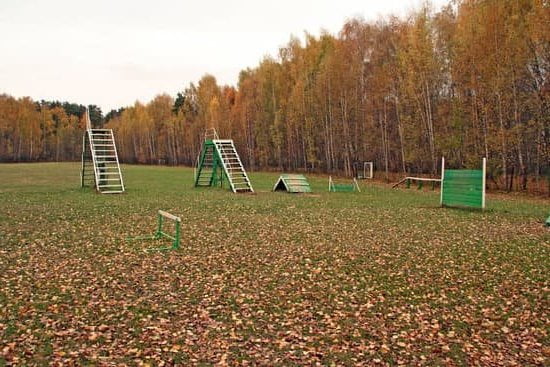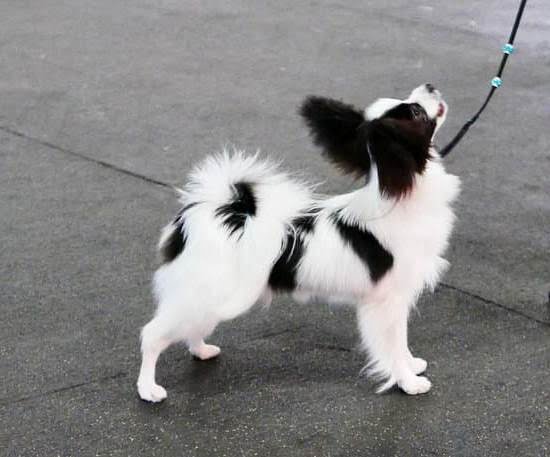Are you tired of your furry friend leaving bite marks on you every time you try to play with them? If so, it’s important to understand how to train your dog not to bite when playing. Many dog owners struggle with this issue, but with the right knowledge and training techniques, it is possible to curb biting behavior in dogs.
Understanding why dogs bite when playing is the first step towards addressing this common problem. It’s natural for dogs to use their mouths during play, but it’s crucial to differentiate between playful mouthing and aggressive biting. By recognizing the signs of aggression versus playfulness in dogs, owners can better respond and train their pets effectively.
Positive reinforcement training methods can be a game changer when it comes to curbing biting behavior in dogs. Consistency and patience are also key components in successfully teaching your furry companion not to bite when playing. Additionally, socialization, proper play etiquette, as well as physical and mental exercise all play crucial roles in reducing biting tendencies during playtime.
By incorporating toys, redirection techniques, and seeking professional help if needed, dog owners can effectively address persistent biting issues with their pets. With dedication and understanding, it is possible to enjoy playful interactions with your dog without the fear of getting nipped or bitten. So keep reading along.
Recognizing the Signs of Aggression Versus Playfulness in Dogs
It is crucial for dog owners to be able to differentiate between signs of aggression and playfulness in their pets, especially when it comes to biting during play. Understanding these signs can help prevent any potential problems and ensure a safe and enjoyable interaction with your furry friend.
One key indicator of playfulness is relaxed body language, including loose, wiggly movements and a play bow – where the front of the dog’s body is lowered while the rear remains up. In contrast, aggressive behavior may involve stiff, tense body posture, raised hackles, and a fixed stare.
Another important aspect to consider is the vocalization of the dog. During play, dogs typically exhibit high-pitched barks or playful growls that are lower in intensity. On the other hand, aggressive behavior often involves deep, guttural growls or snarling.
It is also essential to observe the context in which the behavior occurs. Playful biting usually takes place during interactive games like tug-of-war or fetch, accompanied by frequent pauses where the dog may solicit more play by nuzzling or licking.
If you notice that your dog seems overly aroused or tense during play, it may be best to end the interaction and give them some time to calm down. This helps prevent any escalation into aggressive behavior and reinforces positive play habits. By being mindful of these cues, you can promote a safe and harmonious environment for both you and your canine companion.
| Signs of Aggression | Signs of Playfulness |
|---|---|
| Stiff, tense body posture | Loose, wiggly movements |
| Raised hackles | Frequent pauses with nuzzling or licking |
| Deep, guttural growls or snarling | High-pitched barks or playful growls |
Positive Reinforcement Training Methods for Curbing Biting Behavior
When it comes to curbing biting behavior in dogs, positive reinforcement training methods can be highly effective. Positive reinforcement involves rewarding your dog for good behavior, which can help to reduce biting tendencies and encourage more desirable actions during play. One of the most common positive reinforcement techniques is using treats to reward your dog when they exhibit non-biting behavior during playtime.
In addition to using treats, it’s important to use verbal praise and physical affection as rewards for not biting during play. When your dog refrains from biting and instead engages in gentle play, offer plenty of verbal praise such as “good boy” or “good girl,” along with gentle pets or scratches behind the ears. This encourages them to continue exhibiting the desired behavior.
It’s crucial that you are consistent with your use of positive reinforcement techniques when training your dog not to bite during play. This means being diligent about offering rewards and praise every time your dog plays without biting.
Consistency is key in helping your dog understand what is expected of them, and will ultimately lead to a successful reduction in biting behaviors. With patience and dedication to positive reinforcement methods, you can effectively train your dog not to bite when playing.
| Positive Reinforcement Technique | Effectiveness |
|---|---|
| Using treats as rewards | Highly effective in curbing biting behavior |
| Verbal praise and physical affection | Reinforces non-biting behavior during playtime |
| Consistency with rewards and praise | Key in helping dogs understand expectations |
The Importance of Socialization and Proper Play Etiquette for Dogs
Dogs, like humans, have their own ways of communicating and interacting with each other. Socialization and proper play etiquette are crucial in ensuring that your dog interacts well with other dogs and humans without resorting to biting or aggressive behavior. Here are some key points to consider when it comes to the importance of socialization and play etiquette for dogs:
- Socialization: Exposing your dog to different environments, people, and animals from an early age can help them become well-adjusted and less likely to exhibit aggressive behavior. This can include visits to the dog park, puppy classes, and regular walks in busy areas.
- Positive Play Interactions: It’s important for dogs to learn appropriate play behavior, such as taking turns when playing with toys, understanding cues for play versus aggression, and respecting each other’s boundaries. This can help prevent biting incidents during playtime.
Proper socialization and play etiquette not only contribute to a well-behaved dog but also fosters positive relationships with other dogs and humans. By introducing your dog to various experiences and teaching them how to interact appropriately during playtime, you can significantly reduce the likelihood of biting behavior.
Remember that patience is key when it comes to socializing your dog, especially if they have had limited exposure to different environments or interactions with other animals. Seek professional help if you encounter persistent difficulties in socializing your dog or if they display concerning behaviors during playtime. By investing time and effort into socializing your dog properly, you can enjoy a fulfilling relationship with a well-behaved canine companion.
Physical and Mental Exercise to Reduce Biting Tendencies During Play
Importance of Physical Exercise
Regular physical exercise is crucial for dogs in order to reduce their biting tendencies during play. When dogs are not given enough physical activity, they can become restless and engage in inappropriate behaviors such as biting. By providing them with regular walks, runs, or playtime at the dog park, you can help them release built-up energy and reduce the likelihood of biting during play.
Mental Stimulation and Enrichment Activities
In addition to physical exercise, mental stimulation is also important for reducing biting tendencies in dogs. Engaging your dog in activities that challenge their mind, such as puzzle toys, obedience training, or interactive games, can help prevent boredom and frustration that may lead to biting behavior during play. Mental enrichment activities not only tire out your dog’s brain but also provide a healthy outlet for their energy.
Combining Physical and Mental Activities
Combining physical exercise with mental stimulation can be particularly effective in reducing biting tendencies during play. For example, taking your dog on a hike where they have to navigate different terrains while sniffing new scents not only provides physical exercise but also engages their brain. By incorporating a variety of activities into your dog’s routine, you can help them expend their energy in a positive way and decrease their urge to bite during playtime.
Using Toys and Redirection Techniques to Discourage Biting
When it comes to training a dog not to bite during play, using toys and redirection techniques can be highly effective. These methods can help teach your pup that there are appropriate ways to interact and play without resorting to biting.
Choose the Right Toys
Selecting the right toys is crucial when trying to discourage biting in dogs. Opt for sturdy toys that are specifically designed for chewing, such as rubber toys or rope toys. Avoid toys that resemble household items, as this may confuse your dog and lead them to think it’s okay to chew on similar items in the home.
Redirection Techniques
If you notice your dog starting to exhibit biting behavior during playtime, use redirection techniques by immediately offering them an appropriate toy to chew on instead. When they take the toy and engage with it, praise them and offer positive reinforcement. This helps them understand that biting humans is not acceptable, but chewing on their toys is encouraged.
Consistency Is Key
It’s important to be consistent with these redirection techniques. Every time your dog displays unwanted biting behavior, calmly redirect their attention to a toy and praise them when they engage with it. Over time, they will learn to associate playing with toys as the proper way to interact during playtime.
Using these toys and redirection techniques can greatly aid in training your dog not to bite when playing. With patience, consistency, and positive reinforcement, you can effectively curb biting behavior in your beloved pet.
Consistency and Patience
When it comes to training your dog not to bite when playing, consistency and patience are essential. Dogs are creatures of habit, and they respond well to consistent training methods. This means that everyone in the household needs to be on the same page when it comes to discouraging biting behavior. Mixed messages can confuse your dog and make it harder for them to understand what is expected of them.
It’s important to remember that training takes time and patience. Rome wasn’t built in a day, and your dog won’t learn overnight. It’s crucial to remain patient and calm during the training process, as getting frustrated or angry can set back your progress. Celebrate small victories and be prepared for setbacks along the way. Consistency in training, combined with patience, will ultimately lead to success in curbing biting behavior.
In addition to consistency and patience, it’s also important to seek out professional help if you are struggling with persistent biting issues in your dog. A professional dog trainer or behaviorist can provide you with tailored advice and techniques suited specifically to your dog’s needs.
Don’t hesitate to reach out for support if you feel like you’re not making progress on your own. Remember, every dog is different, and some may require extra guidance from an expert.
Seeking Professional Help for Persistent Biting Issues in Dogs
In conclusion, training a dog not to bite when playing requires understanding the reasons behind their behavior and using positive reinforcement techniques to address it. Recognizing the signs of aggression versus playfulness, providing proper socialization, exercise, and utilizing redirection techniques are all crucial in curbing biting behavior in dogs. Additionally, being consistent and patient throughout the training process is essential for success.
However, in some cases, despite consistent efforts and patience, a dog may continue to exhibit persistent biting issues during play. When this happens, it is important to seek professional help. A certified dog trainer or a behaviorist can provide expert guidance and develop a tailored training plan to effectively address the specific needs and behaviors of the dog.
Furthermore, seeking professional help is especially important if a dog’s biting behavior poses a risk to people or other animals. Professional trainers can assess the situation thoroughly and provide specialized interventions to ensure the safety of both the dog and those around them. Remember that with dedication, patience, and professional guidance, even persistent biting issues in dogs can be successfully addressed.
Frequently Asked Questions
How Do I Get My Dog to Stop Playfully Biting?
To get your dog to stop playfully biting, it’s important to establish clear boundaries and consistent training. Redirect their attention towards appropriate toys or activities when they start playfully biting. Offer positive reinforcement for good behavior and gently but firmly discourage any nipping.
How Do You Discipline a Dog for Play Biting?
When disciplining a dog for play biting, it’s essential to avoid any form of physical punishment. Instead, use positive reinforcement for good behavior and redirect their attention when they start nipping. Consistent training and patience will help them learn appropriate behavior without resorting to harsh discipline.
Why Does My Dog Bite Me When Playing?
Dogs often bite during play as a way of interacting with their environment and expressing themselves. They may also be trying to initiate play or seeking attention.
It’s important to teach them that gentle mouthing is acceptable, while discouraging more intense nipping through consistent training and redirection towards appropriate toys or activities. Understanding their body language can also help prevent unwanted biting during playtime.

Welcome to the blog! I am a professional dog trainer and have been working with dogs for many years. In this blog, I will be discussing various topics related to dog training, including tips, tricks, and advice. I hope you find this information helpful and informative. Thanks for reading!





